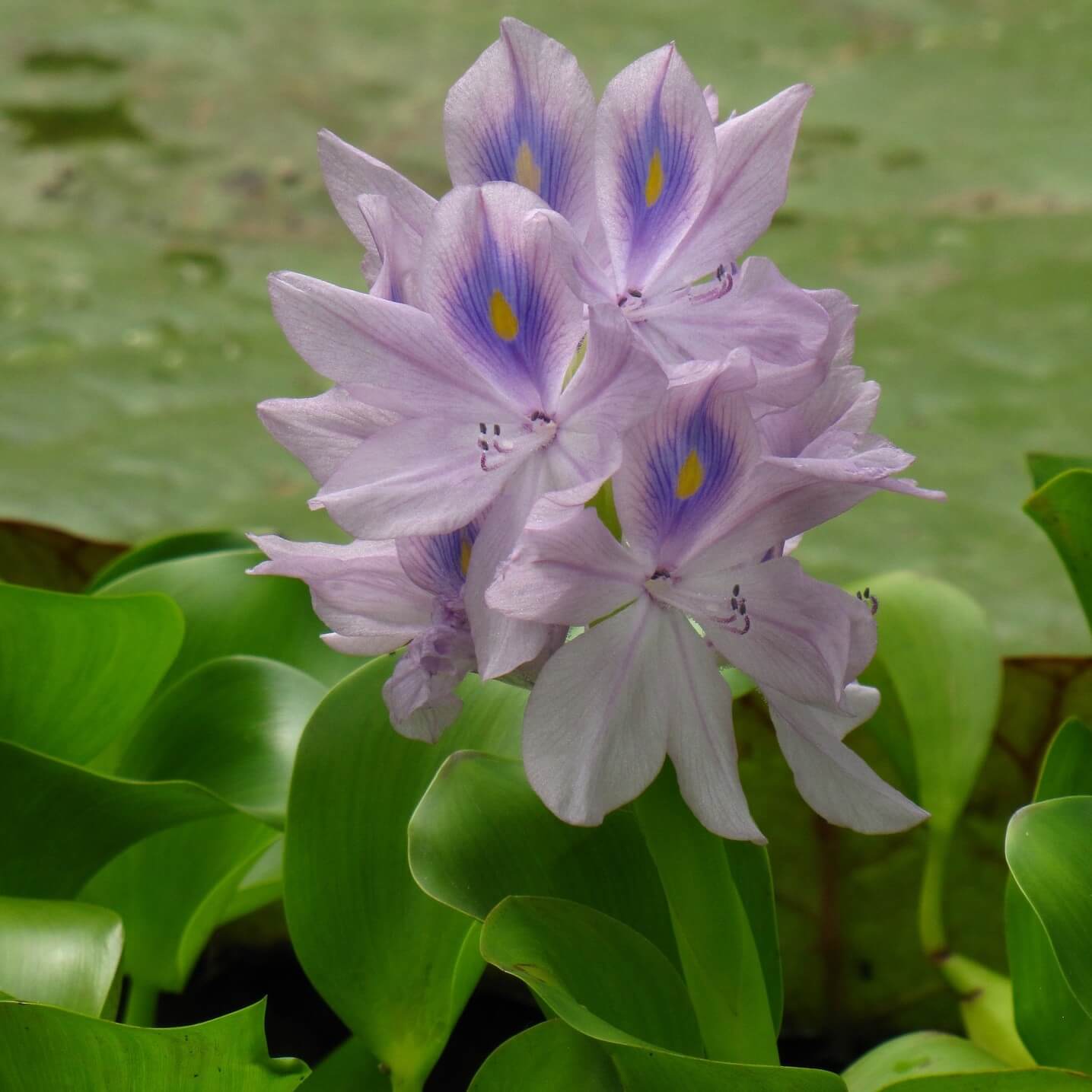Using Submerged and Floating Water Plants in your pond.
Submerged and Floating Water Plants can play a key role in our yearly struggle for clean and clear water. They benefit water gardens in a variety of ways and can make the difference in turning a green pond clear.
Submerged / Oxygenators
Submerged water plants like Anacharis, Cabomba and Parrot’s Feather fill several beneficial roles in the water garden. They are often referred to as Oxygenators, since like all plants they produce oxygen during the day. In the process of creating oxygen, they consume nutrients present in the water. These are the same nutrients that algae feed on. In addition to producing oxygen and depriving algae of food, they provide habitat for small fish. Pond fish will also feed on the plants. The plants can also trap and hold particles floating in the water. Anacharis is fully submerged, and often used in aquariums as well as water gardens. In East Tennessee it is often evergreen and overwinters successfully. Cabomba is similar, but has a finer foliage. Parrot’s Feather roots in deep water but has a light green feathery foliage that extends above the surface of the pond.
[vc_row][vc_column width=”1/2″][us_single_image image=”6316″ align=”center”][vc_column_text]Parrot Feather
[/vc_column_text][/vc_column][vc_column width=”1/2″][us_single_image image=”6315″ align=”center”][vc_column_text]Anacharis
[/vc_column_text][/vc_column][/vc_row]Floating Water Plants
Two of the most common floating water plants are Water Hyacinth and Water Lettuce. These plants consist of green foliage on the surface and an extensive feathery root system that hangs below the plant. They reproduce by sending out runners (stolons) that will produce another plant. The new plant in turn will send out runners and reproduce. In warmer climates these plants are extremely invasive and can overwhelm and clog canals and water ways. Our climate in the East Tennessee area is cold enough that they do not survive the winter.
Water Hyacinth – has dark green smooth leaves and bulbous air sacks that allow it to float. Each Hyacinth will bloom once with an attractive cluster of purple flowers. It does well in full sun and partial shade.
Water Lettuce – has light green slightly fuzzy leaves, and does better in partial shade to shady conditions.
[vc_row][vc_column width=”1/2″][us_single_image image=”6318″ align=”center”][vc_column_text]Water Lettuce
[/vc_column_text][/vc_column][vc_column width=”1/2″][us_single_image image=”6317″ align=”center”][vc_column_text]Water Hyacinth
[/vc_column_text][/vc_column][/vc_row]These floating water plants provide several benefits. They are great for surface coverage, which will block sunlight and help control algae growth. The root systems which extend below, allow the plants to compete with algae for nutrients. Dirt particles are also trapped by these extensive roots, and help to keep a pond clear. If the floaters grow too quickly you can remove the excess and use them for composting or simply discard them.

